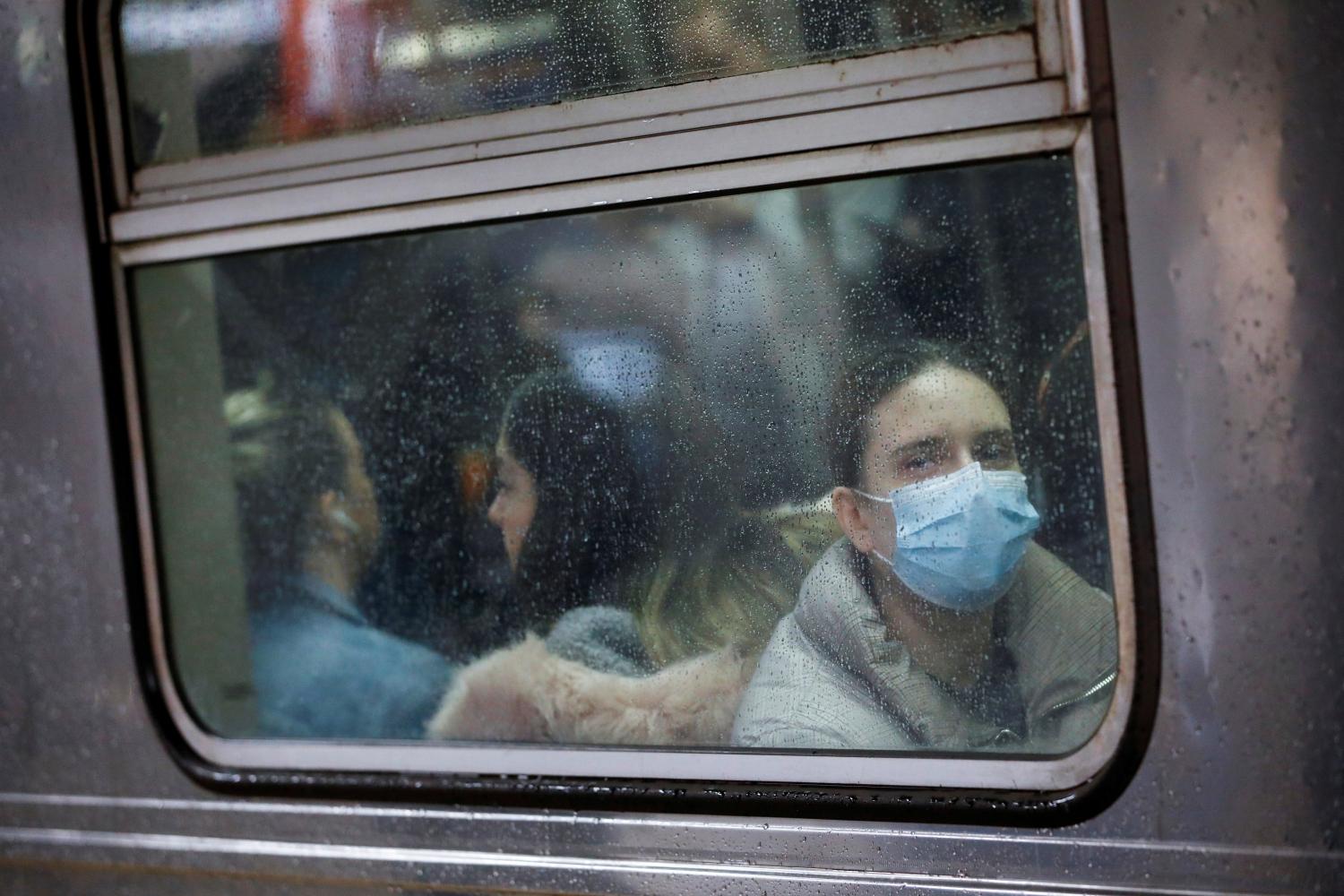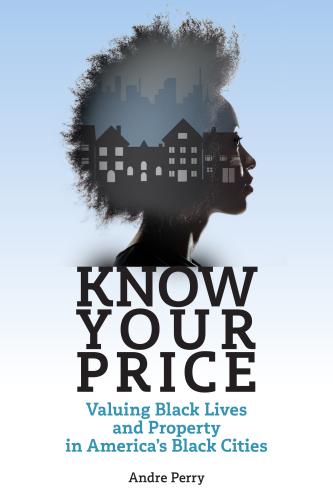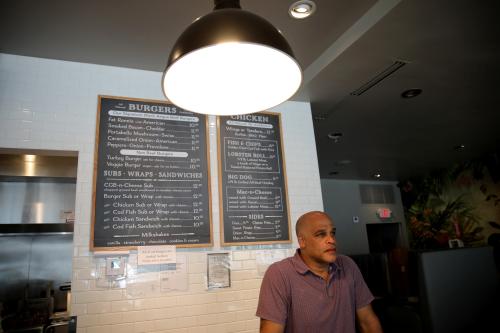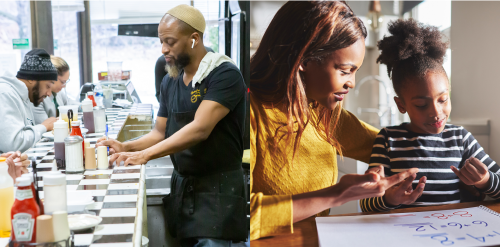A spate of recent news accounts reveals what many experts have feared: Black communities in the U.S. are experiencing some of the highest fatality rates from COVID-19. But without an understanding of the policy contexts that have shaped conditions in Black-majority neighborhoods, one may assume the rapid spread of the coronavirus there is caused by the individual behaviors of residents.
We’re all susceptible to this white supremacist myth that claims the conditions in Black communities are mainly the result of Black people’s collective choices and moral failings. Rather, it is historic and systemic housing devaluation, economic injustice, and discrimination in health care that have created the conditions that increase rates of morbidity and mortality, especially during this unprecedented pandemic.
After intense public pressure to release racial data on infections, Louisiana Gov. John Bel Edwards announced last week that 70% of the state’s COVID-19 fatalities were Black residents. (Louisiana’s total population is approximately 33% Black.) Initial reports implicated Mardi Gras as a cause for the spread. While this certainly contributed to the rate of the outbreak, white people also celebrated in this citywide event. There’s something else facilitating the spread of the disease.
“The trifecta of poverty, healthcare inequality, and a culture of communal cohabitation makes the virus a devastating reality for many black New Orleanians,” wrote Asad El Malik last month in New Orleans’ Big Easy Magazine.
Race and place are clearly associated with the spread. While Black Chicagoans represent 29% of the city’s population, they make up 70% of COVID-19 fatalities. In Washington, D.C., Black people are 46% of the population but 62.5% of COVID-19 fatalities. In Michigan, the heavily Black tri-county area of Detroit has quickly become the epicenter, accounting for nearly 85% of the state’s COVID-19 deaths.
The coronavirus does not discriminate, but our housing, economic, and health care policies do. Environmental racism, unaffordable housing, a lack of job opportunities, poverty, and inadequate health care are underlying social conditions, strongly influenced by policy, which place Black people and their neighborhoods at risk. To flatten the curve of COVID-19 and prevent future pandemics from wreaking the same havoc, these conditions must be addressed.
Further, many of these underlying social conditions can be mapped to show where risk factors are highest.
Mapping racial risk factors
The trajectory of the coronavirus outbreak in any place depends on many factors, including the local, state, and federal governmental response, hospital and ICU capacity, and instances of poor social distancing.
New Orleans is a striking example of the virus taking hold in a Black-majority city, where basic structural inequities and intrinsic qualities come to bear. What other Black-majority cities have in common with New Orleans are higher rates of poverty, health inequity, and multigenerational family cohabitation—all conditions that public policy helps shape.

The above map sheds light on areas which, like New Orleans, have a high “equity risk level” determined by high rates of poverty, inequitable health outcomes, and multigenerational family cohabitation. We measure poverty by the share of families below the poverty line (from Census Bureau estimates), inequitable health outcomes by the gap in life expectancy between Black and white residents, and multigenerational family cohabitation by the share of the population of family members living in households in which they are neither spouses nor children of the head of household. Counties are ranked by the number of metrics in which they fall in the top quintile, with those in the top 20% for each risk factor shown in red.
In Orleans Parish, the poverty rate for families is 17.8%—well above the national figure of 10.1%. Life expectancy for white residents is 80 years, compared to 75 years for the Black population. Of people living in households, 9.4% are extended family members, compared to 7.4% nationwide. These shocking numbers place Orleans Parish in the top 20% of all counties on each metric.
Due to decades of discriminatory policymaking, correlations between poverty, life expectancy, and predominantly Black communities are well-documented. Similarly, multigenerational family living has a positive correlation with the share of the Black population in neighborhoods. In neighborhoods (approximated by census tracts) that are less than 1% Black, only 6% of the population lives in households in which they are not the spouse or nonadult children of the head of household, compared to 12% in Black-majority neighborhoods.

The other counties in this cohort are primarily scattered across the Southeast, particularly in areas throughout Louisiana, Mississippi, and Alabama with high Black population concentrations. Most counties in this classification are rural, but the cohort notably includes counties outside the Deep South with large Black cities, including Detroit, Baltimore, and Richmond, Va., as well as Fresno, Calif., a city with a Black population of around 8%.
The case of Detroit. Detroit is the largest Black city in the country, the largest city within this cohort of counties at high risk of an inequitable public health crisis, and the site of one of the nation’s most severe and most inequitable coronavirus outbreaks. Many of the same factors which fueled the progression of the disease in New Orleans are at play in Detroit, and the situation has rightly been recognized by many as a racial justice issue. Decades of discrimination and divestment from areas with a high concentration of Black residents has created these conditions in Detroit—and in cities around the country—that allow this crisis to exact an uneven and disproportionate toll on Black America.
The case of Albany, Ga. It’s not just heavily urban counties which stand out in terms of these risk factors. One county that falls into the top 20% on two of three metrics is Dougherty County, Ga., home to the city of Albany—the site of one of the first hotspots in the country, and an emblematic example of the unequal impacts of the pandemic. Nearly one in four Dougherty County residents lives in poverty, and 9% live in multigenerational family households. While the gap in life expectancy for Black and white residents (74 and 75 years, respectively) is relatively small compared to other counties, it still poses a risk, and reflects the higher rate of premature mortality among Black residents than the white population. However, the risk to Albany’s residents—especially Black residents, who make up 73% of the city’s population—is major. For a city of roughly 75,000 like Albany, and which has these conditions, an initial spreading event such as a well-attended funeral gathering may be akin to a Mardi Gras parade.
The limits of mapping, and limits of the blame
To be clear, this mapping exercise is not a prediction of where the virus will spread next, or a sign of complete safety for those counties not in the classification. Nor is it an attempt to assign the blame for the consequences of the pandemic on the residents of these communities. Rather, it is a call to action for local, state, and federal leaders to make the connection between policy and individual outcomes. We must remove the blame we place on Black people, along with the underlying conditions that leave them more vulnerable.
There are individual choices that are at fault in these places—just not the ones we typically hear. Policymakers created wealth inequality, incarceration disparities, a lack of affordable housing, and inadequate health care through the policies they chose to pursue. By choosing to neglect Black communities during good times, we are forced to confront these existential problems during worse times.
The Brookings Institution is committed to quality, independence, and impact.
We are supported by a diverse array of funders. In line with our values and policies, each Brookings publication represents the sole views of its author(s).











Commentary
Mapping racial inequity amid COVID-19 underscores policy discriminations against Black Americans
April 16, 2020